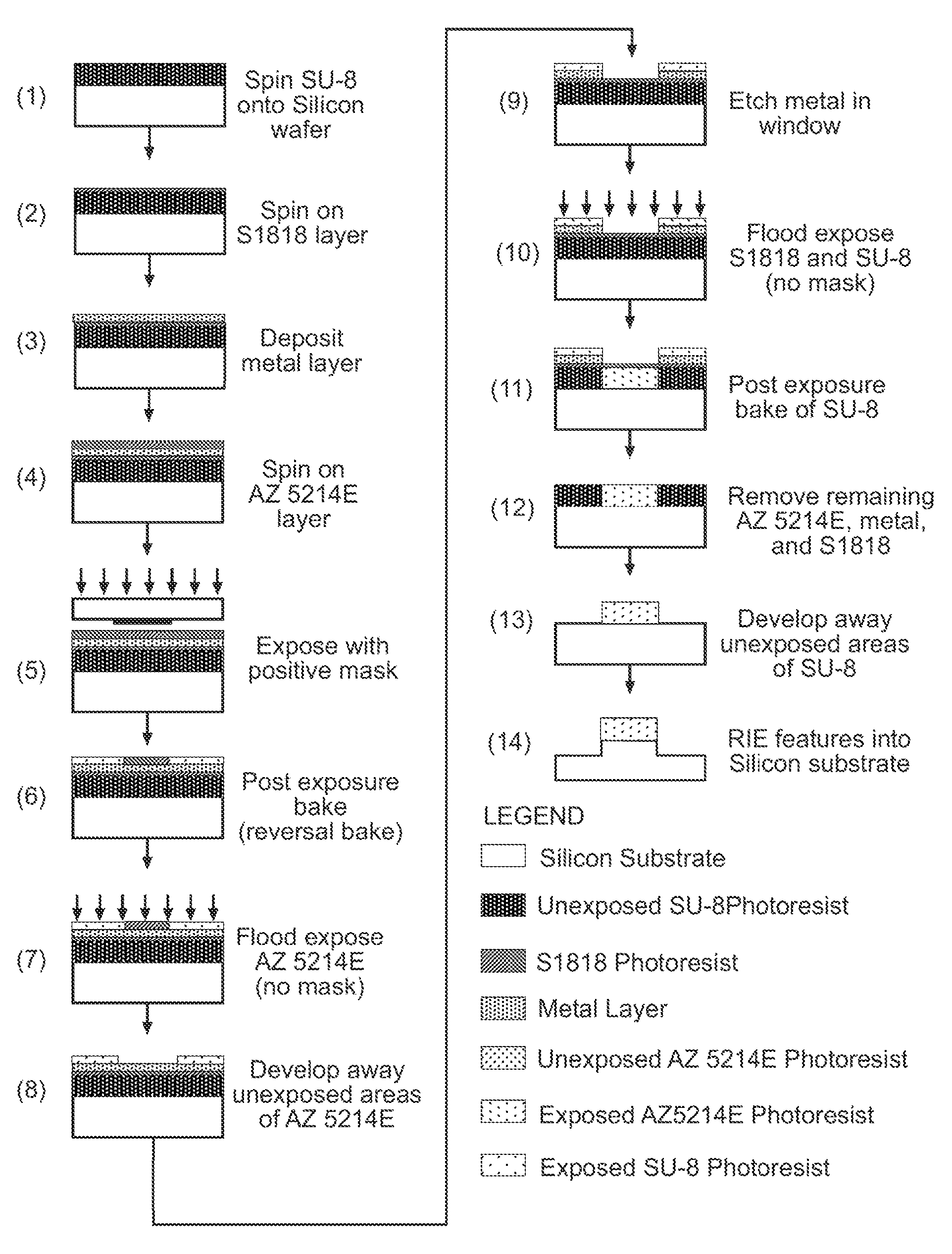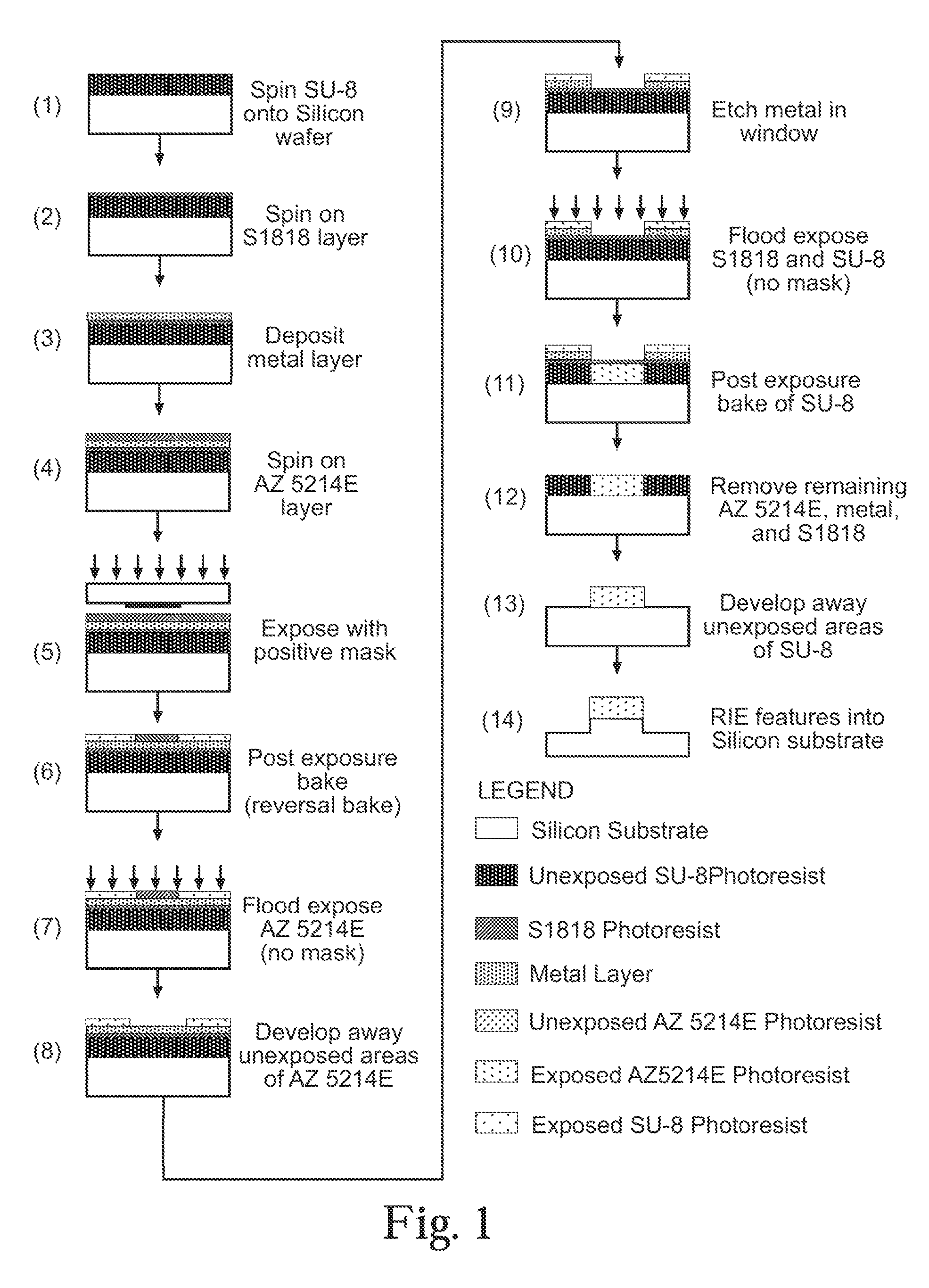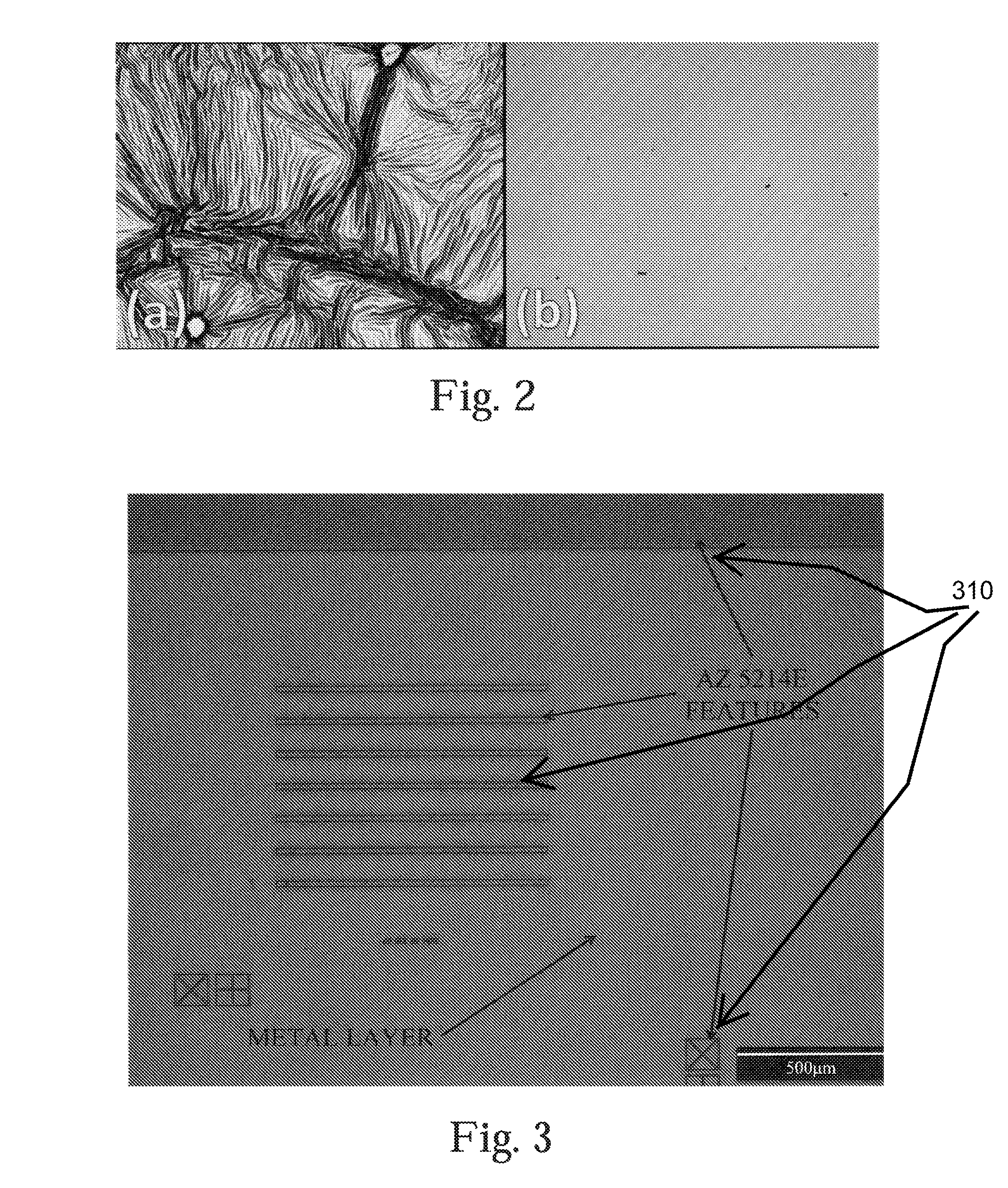MEMS fabrication process base on SU-8 masking layers
a technology of micro-electromechanical systems and masking layers, applied in the direction of microlithography exposure apparatus, photomechanical treatment, instruments, etc., can solve the problems of wasting time and money, affecting the quality of the mask, and requiring approximately 1 week to write, fabricate, and ship new negative tone masks with 2 m minimum features, etc., to achieve the effect of saving both money and tim
- Summary
- Abstract
- Description
- Claims
- Application Information
AI Technical Summary
Benefits of technology
Problems solved by technology
Method used
Image
Examples
Embodiment Construction
[0025]This processing technique has been detailed in: (1) Scott A. Ostrow II, Jack P. Lombardi III and Ronald A. Coutu, Jr., “Using positive photomasks to pattern SU-8 masking layers for fabricating inverse MEMS structures”, Proc. SPIE 7972, 79722J (2011); doi:10.1117 / 12.881653; and, (2) Scott A. Ostrow and Jr. Ronald A. Coutu, “Novel microelectromechanical systems image reversal fabrication process based on robust SU-8 masking layers”, J. Micro / Nanolith. MEMS MOEMS 10, 033016 (Sep. 2, 2011); doi:10.1117 / 1.3625633, both of which are incorrorated herein by reference.
[0026]The process starts with the coating of a clean silicon wafer with SU-8 at the standard spin speeds. A 5-μm thick SU-8 layer was utilized in the development of this novel process. This is followed by a ramped softbake, with a bake at 65° C. for 3 min. followed by a bake at 110° C. for 10 min. This is a longer bake time and higher bake temperature than typically prescribed, but it is critical to ensure the integrity o...
PUM
 Login to View More
Login to View More Abstract
Description
Claims
Application Information
 Login to View More
Login to View More - R&D
- Intellectual Property
- Life Sciences
- Materials
- Tech Scout
- Unparalleled Data Quality
- Higher Quality Content
- 60% Fewer Hallucinations
Browse by: Latest US Patents, China's latest patents, Technical Efficacy Thesaurus, Application Domain, Technology Topic, Popular Technical Reports.
© 2025 PatSnap. All rights reserved.Legal|Privacy policy|Modern Slavery Act Transparency Statement|Sitemap|About US| Contact US: help@patsnap.com



